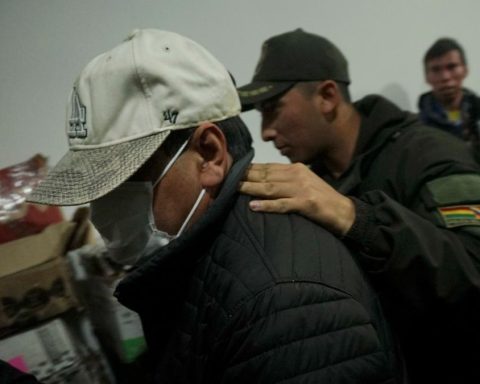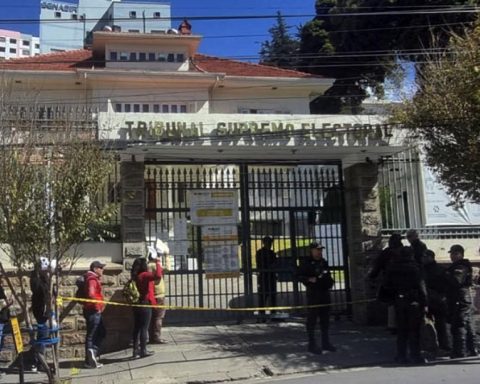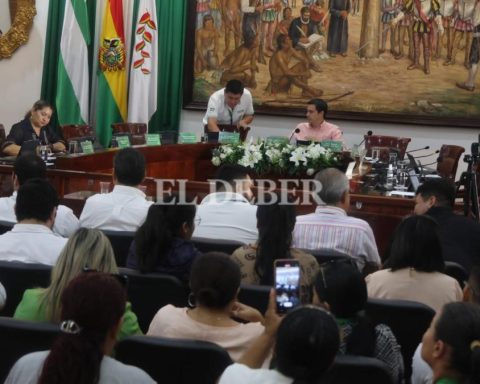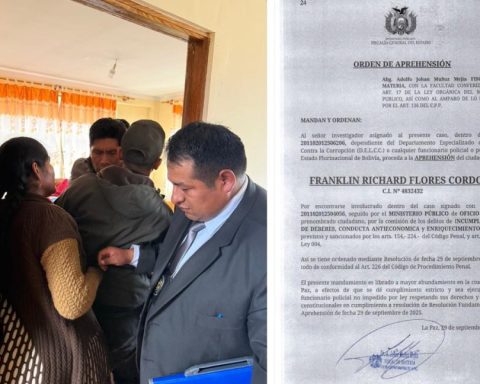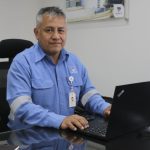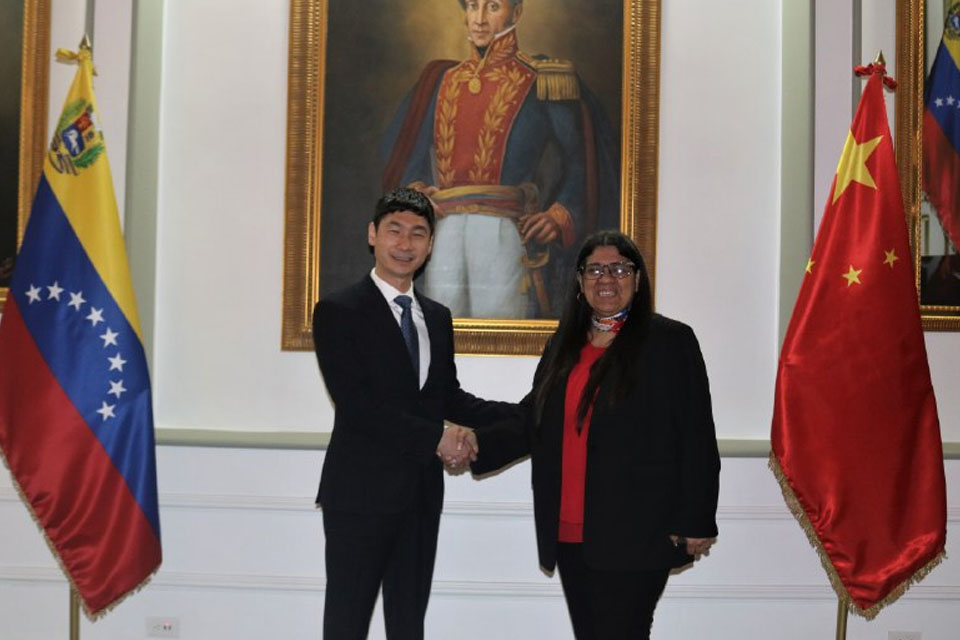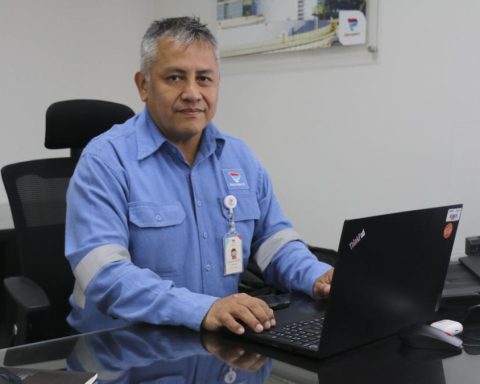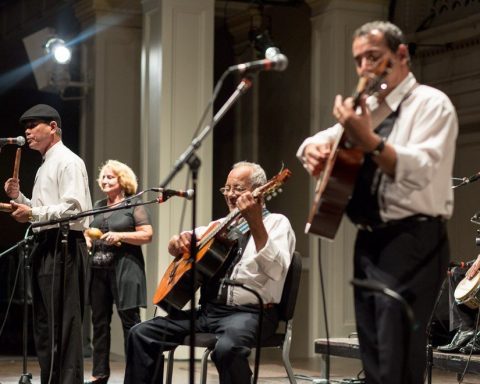April 30, 2023, 12:25 PM
April 30, 2023, 12:25 PM
They were around here, alive. It happened 68 million years ago and Juan Carlos Molina caught them; he was seduced by her incredible story. They, the dinosaurs, They walked through the territory where Sucre is today and recorded their visit with the record of 12,092 footprints that can still be seen.
“We are facing the largest reservoir of dinosaur footprints on the planet, there is nothing like it anywhere else.” With these words, Molina begins to show the heart of Sucre’s Cretaceous Park, which is the Cal Orko cliff and the center of the most visited tourist attraction in the historic capital of Bolivia.
And he’s right. The number of footprints that exist there is much greater than those found in other paleontological reservoirs. For example, at Lark Quarry, Australia; Yanguoxia, China or Altamira, Spainon average, have 2,000 records, according to data released by National Geographic.
“Where dinosaur footprints have been found there were no fossils of their bones and where fossils were found there were no footprints”, explains Molina to a group of visitors who reached the cliff. Therefore, the site is a physical testimony, real and tangible of his presence. The study of the traces has served to reconstruct their behavior and habits.
The Cal Orko cliff is in a limestone deposit, the raw material for making cement. It’s right behind the French factory, Sucre’s main industry that was born 64 years ago.
In the mid-50s of the last century, when this limestone deposit was being explored, a block of stone fell from the mountain, as if someone had cut a loaf of bread. Since then, due to the effect of the wind, the footprints began to be visible. By 1994, the evidence mobilized scientists, first from Argentina and then from other latitudes. Four years later, the find was fully certified.
But the cliff could end up in a bag of cement. The copious amounts of magnesium oxide in those rocks saved him. This component is not suitable for the manufacture of cement.
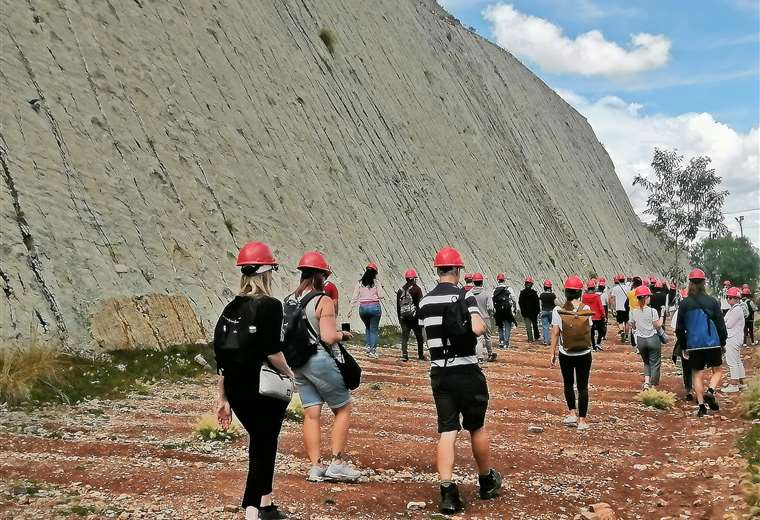
The paleontologist Christian Meyer, representative of the Natural Museum of Solothurn in Switzerland, declared then that the Cal Orko was “only one in the world”. “These findings allow us to conclude, for example, that dinosaurs They were gregarious and they protected the smallest and youngest by placing them in the center of the group”.
Molina explains this story and does it with passion. “This was a lagoon that about 68 million years ago was at sea level.” From the black bag that he brings with him, he takes out several sheets of paper to explain how this kind of giant watering hole ended up at 2,800 meters above sea level and with an inclination of 75 degrees. “They are the tectonic layers that moved for millions of years until they ended up in this place”specifies the guide and he also does it in English because among those who visit there are tourists.
The 12,092 tracks correspond to about 300 animals. So far, traces of four large groups of dinosaurs have been certified. Theropods, which were those agile carnivorous hunters; the sauropods best known for their enormous long necks; the ornithopods that were two-legged herbivores; and the ankylosaursthose who were protected by a shell on their entire body.
All of them reptiles, because when they inhabited the planet, mammals were very small. Molina takes a plastic replica of each of the former visitors from her bag. He explains to the tourists, most of them European, but there was also a couple of lThe Fiji Islands and another in New Zealand, what they were like and what they did to survive.
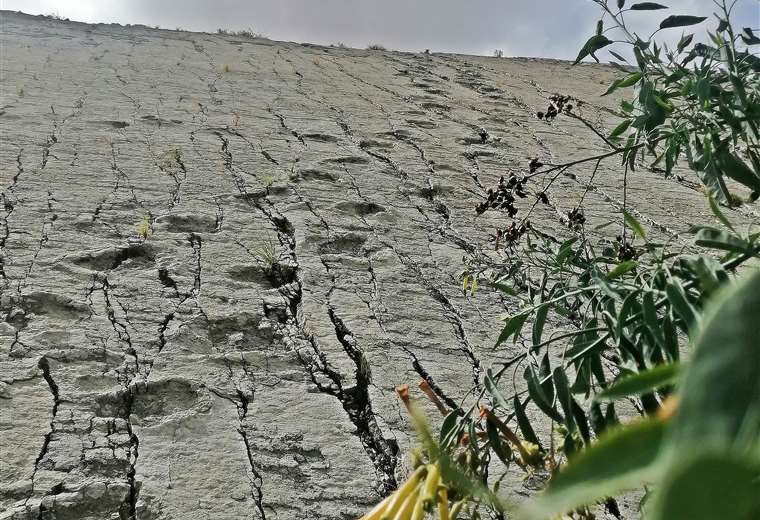
footprints of dinosaurs in Cal Orko. Photo: MQ
The enthusiastic guide has been with the park for almost 17 years now. It has been since it was inaugurated. He is happy about the return of visits after the covid.
Since it was founded, the Cretaceous Park has received 2.3 million visits, about 40% foreigners. In 2022, there were some 180,000 visitors, explained the director of the attraction, Elizabeth Baldivieso. “It’s not just tourism, this is a place to learn how the planet was formed.”
This attraction will be expanded so that the visitor is closer to the cliff. For this, an investment of $us 7 million has been foreseen, which will materialize thanks to international cooperation.
– The Cretaceous Park is a thematic and educational attraction that is 2,800 meters above sea level. It is located behind the Fancesa cement factory.
– This attraction belongs to Fancesa, the Mayor’s Office and the Governor’s Office of Sucre.
– It is visited not only by tourists. Scientists from various parts of the world come to the park. 1 have been individualized2,092 footprints from four groups of dinosaurs.
– On the cliff where the footprints are, several preservation works have been carried out, such as channels in the back to avoid a nNegative due to the rains.
